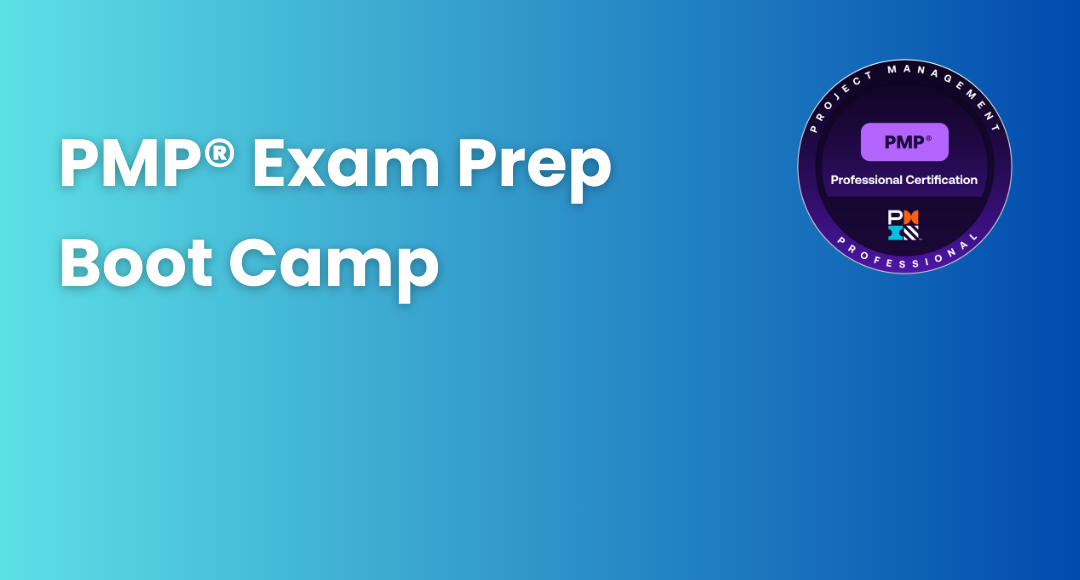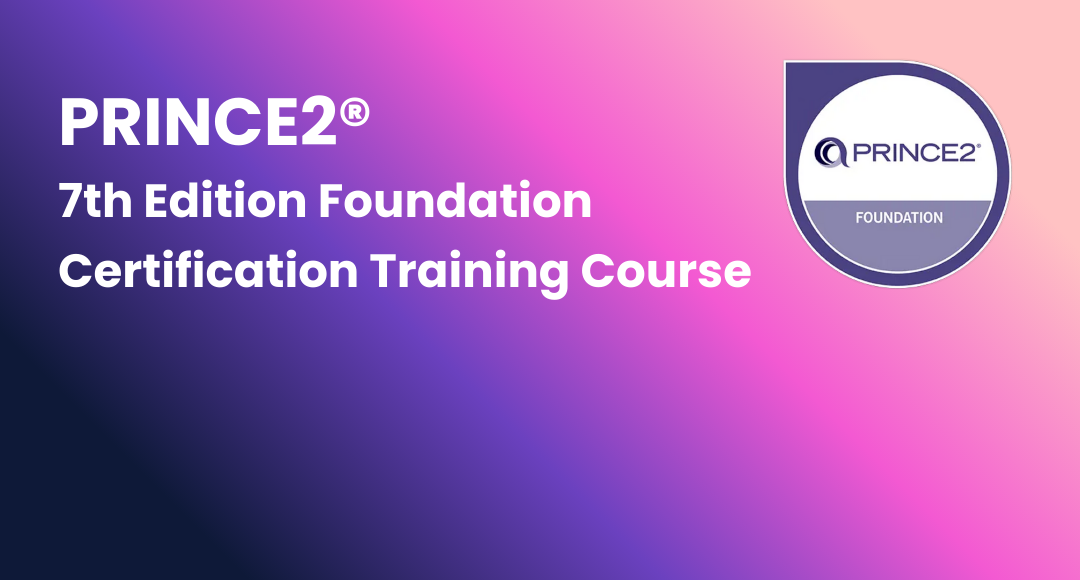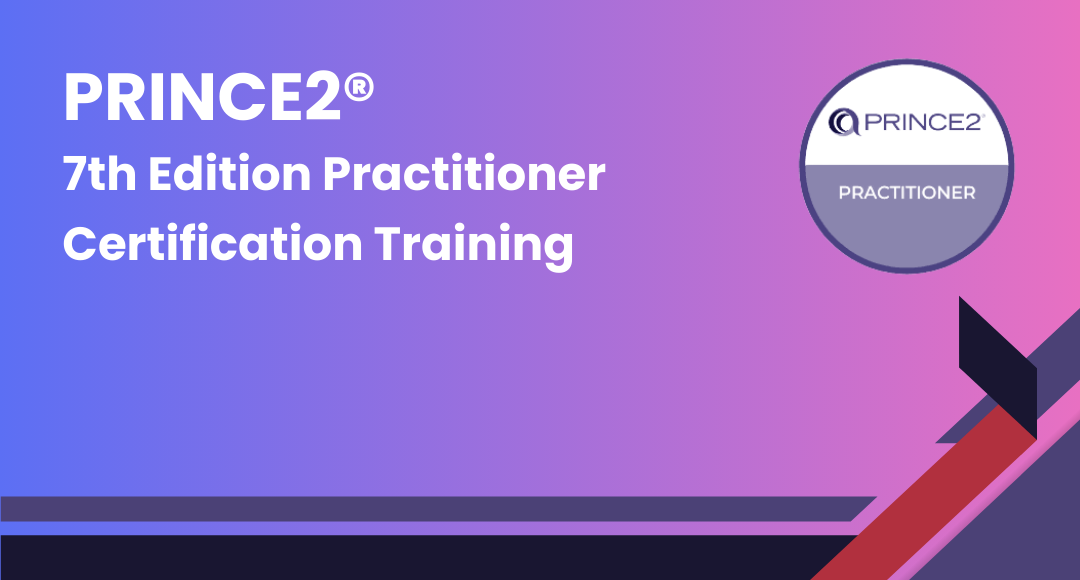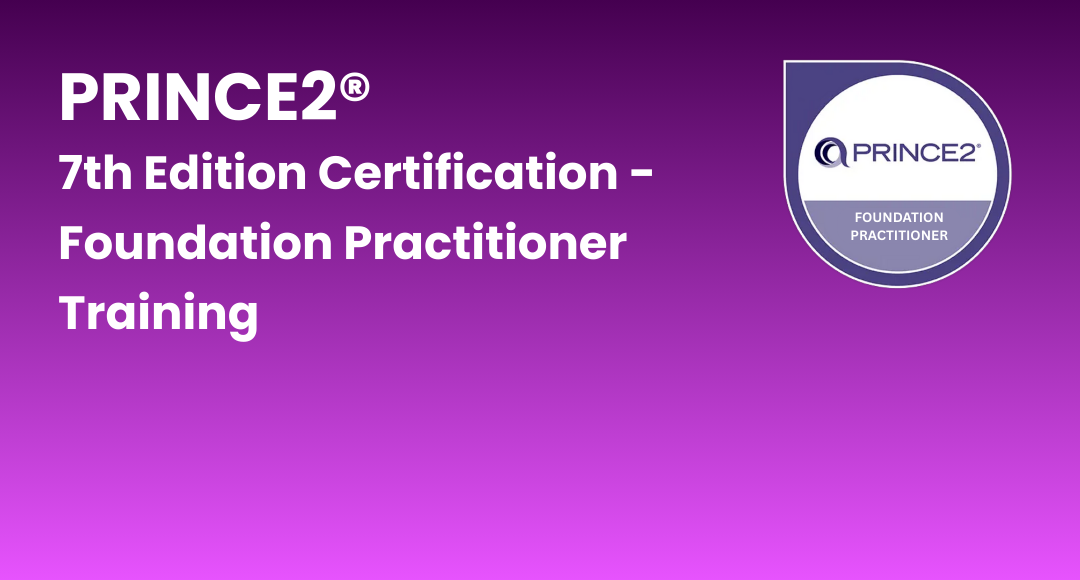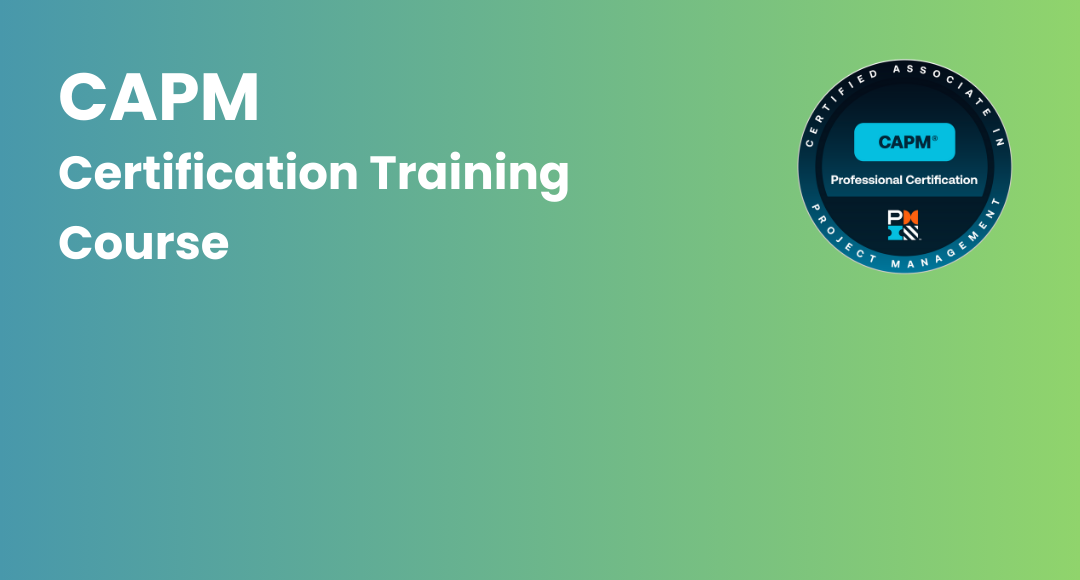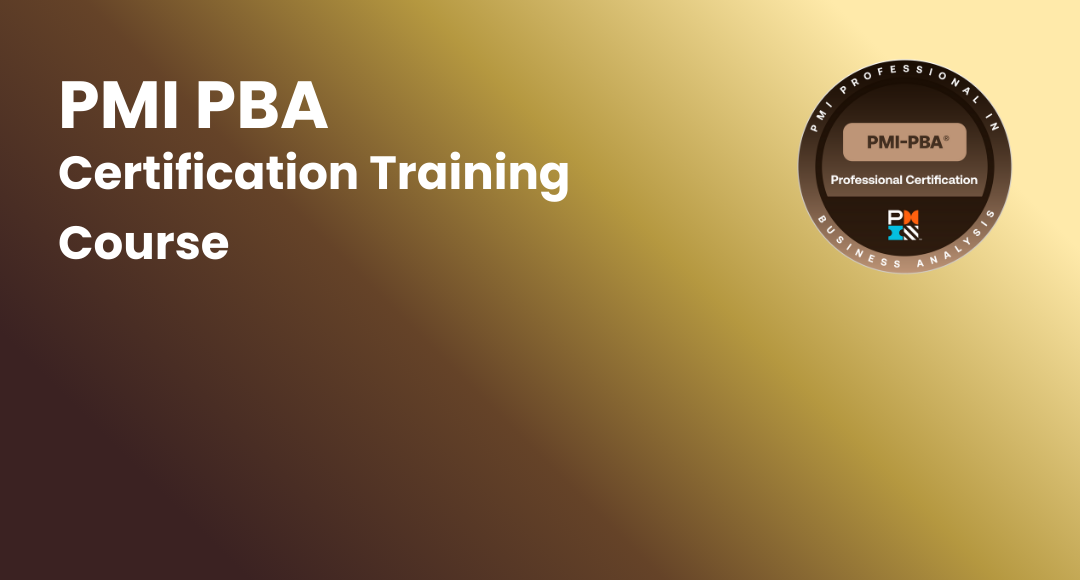Strategic Management Guide 2026
-
 By Aradhya Kumar
By Aradhya Kumar - Published on Apr 5 2023

Table of Contents
- Introduction
- Strategic Management Process
- Strategic Decision Making
- Strategic Management Plan
- Strategic Decisions
- Strategic Control
- Strategic Financial Management
- Strategic Account Management
- Strategic Project Management
- Strategic Cost Management (SCM)
- Strategic Business Management
- Strategic Portfolio Management
- Strategic Operations Management
- Strategic Management for Quality Control
- Strategic Inventory Management
- Strategic Asset Management
Introduction
Strategic Management is about identifying and describing the strategies managers are able to employ to ensure better results and gain a competitive edge for their company. A company is considered to be competitive if its profits are higher than the average profit of all businesses in its field.
Strategic management is described as a set of actions and decisions the manager takes on and determines the results of the company's performance. Managers should have a deep understanding of and an evaluation of the overall and competitive environment of the organization in order to make the right decisions.
They must perform a SWOT analysis (Strengths and Weaknesses Opportunities and Threats), i.e., they must make the best use of their strengths, reduce the weaknesses of the organization, utilize opportunities in the business environment, and not overlook the risks.
Strategy management can be described as nothing more than creating plans that account for predictability and impossible events.
It's applicable to small and large businesses since even the most modest of companies are in competition. Creating and implementing the right strategies that will give them a long-lasting competitive advantage.
It's a process by which strategists establish the goals and then work towards these goals. It involves the making of and taking decisions regarding the future direction of an organization. It assists us in determining the direction an organization is headed.
The process of strategic management can be described as a continual process of evaluating and controlling the company and the industries that an organization is involved.
It examines its competition and formulates objectives and strategies to compete with any potential or existing competitors. Then, it reevaluates strategies regularly to see how it has been implemented and if it was effective or whether require replacement.
Strategic Management Process
The process of strategic management is setting the strategy of the company. It's also known as the procedure that managers use to choose an array of strategies for the organization to enable it to perform better.
The process of strategic management can be described as a constant process of evaluating the industry and business where the organization is involved, assessing the company's competitors; and establishing goals that meet the needs of all current and future needs of the competitors and after that, reevaluates every strategy.
Strategic management process follows the four steps:

1) Environmental Scanning- Environmental scanning is the method of collecting, analyzing, and distributing information to support strategic goals. It assists in understanding the external and internal factors that influence the company. After the completion of the process of environmental analysis, the management must evaluate it regularly and try to enhance it, and avoid the strategies of conflict.
2) Strategy Formulation- Strategy formulation is the process of choosing which is the best way to go about achieving organizational goals and reaching the organizational goal. After conducting an environmental scan managers create an organizational, business, and functional strategies.
3) Strategy Implementation- Strategy implementation is about implementing the strategy in the way it was intended, or putting the company's strategy into practice. Implementation of the strategy involves defining the structure of the company, dispersing resources, establishing a decision-making procedure, and directing human resources.
4) Strategy Evaluation- Strategy evaluation is the ultimate phase of the process of implementing strategy. The primary strategies that need to be evaluated include evaluating the external and internal factors that determine the effectiveness of current strategies, assessing the effectiveness of strategies, and taking corrective or corrective steps.
Evaluation is a way to ensure that the strategy of the organization and its implementation match the objectives of the company.
These are the steps that are completed in chronological order while making a new strategic management plan. Businesses that have developed a strategic management plan can revert to these steps based on the needs of the moment and make necessary adjustments.
Strategic Decision Making
Strategic decisions are those that concern the whole context in which the firm operates, all human resources that make up the company, as well as the connection between them.
Characteristics/Features of Strategic Decisions
1) Strategic decisions can be a major resources for an organization. These choices could be concerned with acquiring new resources, coordinating others, or relocating others.
2) Strategic decisions focus on harmonizing capacities of the organization's resources in relation to challenges and opportunities.
3) Strategic decisions cover the broad range of organizational functions. It's about how they would like the organization to be and how it will be perceived.
4) Strategic decisions are characterized by significant changes because an organization is operating in an constantly changing environments.
5) Strategic decisions can be complex in their nature.
6) Strategic decisions, at the highest level. They are a bit uncertain when dealing with the future and carry a significant amount of risk.
7) Strategic decisions differ from operational and administrative decisions. Administrative decisions are the ones that are routine that aid or even facilitate the strategic decision-making process as well as operational ones.
Operational decisions are the ones which aid in the implementation of decisions that are strategic. The goal of reducing costs is a major strategic choice that can be achieved by making an operational decisions to reduce staff numbers employed and how we implement the reductions will be an decisions made by the administrative department.
Strategic Management Plan
What is the strategic planning process?
In simplest words, the term "strategic planning" is the strategy that businesses employ to create plans to reach their long-term, general objectives.
This is different from the process of planning a project procedure that helps define and assign tasks to specific projects. It is also known as strategic mapping which can help you define your vision, mission, and objectives.
The process of strategic planning is more comprehensive, it assists you in creating an outline of the goals you need to work towards and which ones will be not as beneficial for the company. The steps involved in strategic planning are described below.
Steps in the process of strategic planning

1) Decide on your strategy
The preparation phase establishes the foundation for the tasks to come.It is essential to be aware of where you are in order to decide where you're supposed to get to and how you'll arrive there.
Engage the appropriate stakeholders right from the beginning, focusing on both external and internal sources.
Find the most important strategic issues through discussions with senior executives at your organization, collecting customer feedback, and gathering information about your industry and markets to have a clear understanding of your place on the market as well as within mind of clients.
It is also beneficial to go through or write down your own if you don't have in place--your business's mission and vision statements to give you and your staff an idea of what success is for your company. Additionally, you must examine your company's core values to keep in mind how your business plans to achieve these goals.
For starting, make use of information from the market and industry such as customer insights and future/current needs, to pinpoint the problems that must be addressed. Note your company's strengths and weaknesses, external opportunities (ways your business can expand to meet requirements that the market does not meet) as well as threats (your rivals).
To help you structure your initial analysis, you can use to create a SWOT diagram. Based on information from customers, executives and market information from outside You can classify your findings into Strengths, Weaknesses Opportunities and Threats (SWOT) to help you understand your current position.
2) Prioritize your objectives
After you've determined your current position on the market, it's time to set goals to help you reach your objectives. Your goals must be aligned with the mission of your business and vision.
Prioritize your goals by asking crucial questions like:
✔ Which of these ideas have the most impact in realizing our vision and mission for the company as well as improving our standing in the marketplace?
✔ What kind of impact is the most significant (e.g.the acquisition of customers in comparison to. revenues)?
✔ How will the competition respond?
✔ What are the most urgent initiatives?
✔ What are we required to accomplish our objectives?
✔ How can we gauge our progress? How will we determine if we have met our objectives?
The goals should be clear and quantifiable to assist you in achieving attain the long-term goals and objectives that you have outlined in step one. Possible goals include changing the content on your website, increasing the open rate of emails, or potential leads to be added to the pipeline.
SMART goals can be useful to establish a timetable and determine the resources required to meet the goals along with the key indicator of performance (KPIs) to ensure that your accomplishment is measurable.
3) Make a plan
It's now time to develop an action plan that will help you achieve your goals. This requires selecting the strategies needed for achieving your goals and establishing a timetable and clear communication of the responsibilities.
Strategy mapping is an efficient tool for visualizing your entire strategy. The top-down strategy maps help you look at business processes and pinpoint the areas that need improvements.
Most strategic decisions usually require an exchange of costs of opportunity. For example, your business might decide not to put the same amount of money into customer service, in order to invest more funds towards creating a more intuitive user experience.
Make sure you are prepared to apply your mission statement, values, and your established goals to tell "no" to any initiative which doesn't improve your strategic position over the long term.
4) Manage and implement the plan
Once you've got the plan, you're now ready to begin implementing it. The first step is to communicate your plan to your organization by sharing the relevant documents. Then the actual work can begin.
Transform your strategy's broader goals into the concrete plan you need by mapping your process. Utilize KPI Dashboards that clearly convey team members' responsibilities. This granular approach demonstrates the process of completion and who is responsible at each step of the process.
Schedule regular reviews for each contributor and their supervisors, and establish the check-in times to ensure that you're in the right direction.
5) Revise and update the plan
The last step of the process -- reviewing and revising -- gives you the chance to reconsider your goals and make adjustments in light of the past's successes and failings.
On every quarter, identify what KPIs your team achieved and what you can do to maintain them and adapt your strategy according to the need. Every year it is important to review your goals and your strategic plan to ensure you're on the right track to be successful in the long term.
Monitor your progress with balanced scorecards for an accurate view of your company's effectiveness and achieving the strategic objectives.
Strategic Decisions
Strategic decisions are the decisions that are concerned with the whole environment in which the firm operates, the entire resources and the people who form the company, and the interface between the two.
Characteristics/Features of Strategic Decisions
1) Strategic decisions have major resource propositions for an organization. These decisions may be concerned with possessing new resources, organizing others, or reallocating others.
2) Strategic decisions deal with harmonizing organizational resource capabilities with threats and opportunities.
3) Strategic decisions deal with the range of organizational activities. It is all about what they want the organization to be like and to be about.
4) Strategic decisions involve a change of major kind since an organization operates in an ever-changing environment.
5) Strategic decisions are complex in nature.
6) Strategic decisions are at the topmost level, are uncertain as they deal with the future, and involve a lot of risks.
7) Strategic decisions are different from administrative and operational decisions. Administrative decisions are routine decisions that help or rather facilitate strategic decisions or operational decisions. Operational decisions are technical decisions that help the execution of strategic decisions.
To reduce cost is a strategic decision that is achieved through an operational decision of reducing the number of employees and how we carry out these reductions will be an administrative decision.
Strategic Control
Strategic controls are designed to guide the business toward its long-term strategic plan. Once a strategy has been selected and implemented, it will be followed in time to help a business navigate an ever-changing environment. Strategies are forward-looking and based on the management's assumptions regarding a variety of things that haven't yet happened.
Traditional methods of controlling try to evaluate the actual performance against a benchmark. After the work is completed and then the manager reviews the results and utilizes the results as a basis to guide future actions. While this strategy isn't ineffective, it is not appropriate to be used as a way of controlling the strategy.
It is not advisable to wait until a plan has been successfully implemented typically taking up to five years in which many adjustments take place with significant consequences to the final effectiveness of the plan.
Therefore, conventional control methods are required to be replaced by more strategic control methods that are aware of the specific needs of control for long-term strategies.
Strategic control is about following the strategy while it is being executed and identifying any issues or changes to the structure and making the necessary adjustments. Contrary to post-action control strategic control is concerned with directing and controlling the actions on behalf of the strategy when the action takes place.
Strategic Financial Management
A term that is used to describe the method that manages the financials of a company in order to reach its strategic objectives. It is a method of management that employs various strategies and financial tools to create an effective plan. Strategic financial management is a way to ensure that the plan is executed to reach the goals you want to achieve.
The importance of Strategic Financial Management
The goal of the strategic approach to financial management is to guide the decision-making process that focuses on business goals in the long term.
Strategic financial management does not just aid in establishing company goals but also serves as a basis to plan and govern strategies to overcome issues throughout the course. It is also about formulating steps to move the company towards its goals.
The objective of financial strategic management is to determine the potential strategies to increase the value of the business's potential value to market. Additionally, it makes sure that the business is following the plan in a way that is efficient to achieve the desired long-term and short-term objectives and to maximize the value of the shareholders. Strategic financial management oversees the finances of an organization to meet its business goals
Strategic Account Management
Strategic Account Management (also called Key Account Management) is a method at the level of an organization that transcends sales and focuses on the creation of partnerships that are mutually beneficial and strategic between the business and its most important customers. SAM creates trust between the two organizations by prioritizing value and facilitating an alignment across the business.
The role of the strategic account manager is an essential position in a business that uses SAM. They are the point of person to contact for the strategic account's stakeholders and are responsible for building the long-term connection with customers.
Important Skills for Strategic Account Managers
Strategic account manager consultants are knowledgeable in their field and adept at solving problems. Their primary focus is on teaching their clients, not making sales to their customers.
Strategic account managers must also be able to lead effectively and manage their SAM teams effectively. They must have the business knowledge to comprehend financial data, along with their business's strategies and operations. They should also possess strong communication skills, interpersonal, influence, and planning abilities.
Strategic Project Management
Strategic Project Management (SPM) is the method of thinking about your projects in relation to their relation to your strategy. Also, Strategic Project Management is about creating clear connections to Your Projects with your Strategic Objectives.
The basic idea behind Strategic Project Management is that "Projects" should work in order to meet the goals and objectives set out in your plan.
This is why thinking about strategically managing your projects are essential. Strategic Project Management isn't just about managing projects. It's more than just large and significant projects, it's about planning the portfolio and managing it. Projects to ensure they are in line with your strategic plan, by making sure:
✔ The combination of Projects is suitable and adequate to meet your Strategic Goals
✔ Your projects are properly supported by the right resources
✔ If resourcing and timelines have to be adjusted, Projects are prioritized according to the strategic plan, as well as any impacts are recorded in the plan.
How can you ensure that you're creating a portfolio of projects which will assist you in executing your plan by actually delivering the goals you set? This article has listed the essential things you'll need to accomplish to make it happen.
Learn about risk management strategies in project management
Strategic Cost Management (SCM)
Definition: Strategic Cost Management or more commonly referred to as SCM is a cost-management strategy that aims to cut costs while enhancing its position in the company.
It's a method that combines the decision-making structure together with the cost information in order to enhance the strategy of the business overall. It analyzes and manages costs in order to make them align with the company's overall business plan.
Strategic Marketing Management
Strategic management has changed a lot in comparison to the way it operates currently.
✔ Budgeting
In the beginning strategies, marketing, strategic management as well as other areas were called budgeting. As the name suggests the approach was primarily focused on budgetary and control mechanisms. The method itself relied on the budget and its numerous variations to oversee marketing plans as well as audits of marketing.
✔ Long-range planning
After budgeting, long-range plans became the norm as the focus changed to forecasting. Based on the current trends forecasts were made regarding the cost of sales, expenses, and profits.
✔ Strategic planning
In the 70s and 1980s Strategic planning centered on the overall control and direction over the planning process. There was still some form of forecasting, but the primary focus was on the business aspect of things.
✔ Strategic management of marketing
We are now in the age of management that is strategic. Strategic marketing management incorporates every variation of the methodology before and integrates all of them into one. The idea is to utilize all versions of the strategies to improve the management of the strategy at hand.
Examples of marketing strategy management
Be aware that strategic management of marketing involves making strategic choices within your current marketing strategy to help you maximize the effectiveness of your strategy. An excellent example is Apple and the way they promote itself.
Strategic Business Management
Strategic management is a crucial element of business. It is the process of forming and implementation of objectives and initiatives that are part of the plans and strategies formulated by the stakeholder groups of an organization. In simple terms, to make sure that the decision-making process is sound it is crucial that the strategies are in place to facilitate operational and business processes. Strategic management is therefore about assessing business objectives, the organization's goals, and vision, and also the long-term plans.
Additionally, the strategic management process is used for ensuring that the company operates efficiently and efficiently.
The ability to communicate this strategy internally as well as externally is essential to achieve success, as it allows employees and the business to comprehend the goal and direction, as well as the external stakeholders understanding the values your company is all about, maintaining the strategic partnerships and firms.
Strategic management is a broad term that encompasses creative thinking, strategy-based planning process, as well as operational planning.
The strategic management of a business specifically, is based mostly on research. It is essential that the business strategy succeed, the customer opinions along with the contributions of employees and industry best practices are all considered.
An effective way to foster strategic business management is to incorporate a significant amount of planning in board meetings, employ trustees who have wide and valuable experiences, and examine the effects of each decision on every job function within the company.
Business annual plans are usually formulated however, in modern times, it's essential to be adaptable and flexible to the changing demands and environments.
Strategic Portfolio Management
Strategic Portfolio Management is a set of procedures and business capabilities that aim to select the most appropriate investments to achieve the overall strategy.
SPM is all about creating an overall, enterprise-wide strategy, which includes its objectives and anticipated outcomes, and continually delivering its goals by implementing projects, products, and services that help transform the business to achieve the goals.
Investments" is a term that is a broad range of actions that affect almost every aspect of the business.
Examples include massive business initiatives (such as identifying the potential of a new market as well as investing in a large project to develop a new product) or major transformation projects (such as digitization of a substantial portion of the company) or significant budgetary decisions (such as buybacks of shares) as well as.SPM is managed at the highest executive level of the company.
SPM has strong ties with the two, PPM along with Project Management, but at an even larger scale.SPM is gaining popularity due to the need for ever-growing businesses to reinvent themselves to adapt to disruptive events like the web or events like that of the COVID pandemic.
Strategic Operations Management
Operational Management is a vital process in an organization that is focused on managing all the operations that are related to creative design, development, monitoring, managing, and improving products and services.
In contrast, the strategic management of operations is related to the management of specific activities to increase the quality of the products and services.
Decision Zones to help with Strategic Operations Management
Operations Management is an essential part of any kind of business regardless of whether it's an online-based software firm or an offline one. In order to manage strategic business decisions, businesses have to take strategic decisions in various areas, which contributes to the overall success of the organization.
Strategic Management for Quality Control
Quality control in totality is a method that aims to eliminate product defects, leading to the creation of a product that meets the standards you want. This approach to quality control concentrates on the management and enhancement of the processes within an organization.
Similar to the strategic management method, this approach sees the company as a whole, which includes various functional units that need a certain amount of flexibility in order to adapt to the changing needs of the market.
Quality control is a total process that emphasizes the importance of including every department in the process of production. This includes design, accounting marketing, finances, and purchasing.
The total quality control process goes beyond making sure that the manufacturing process is clearly defined and constantly enhanced. It also ensures that employees possess the necessary skills and knowledge to be able to complete the procedures and that there's an attitude of trust and culture within the organization to promote the highest quality.
Strategic Inventory Management
While the crucial function of the supply chain which also includes inventory management is becoming more apparent to all, and the number of college degrees in the supply chain is on the rise, many companies remain skeptical of it being an unnamed department of purchasing.
Effective procurement is a crucial job, but it doesn't define or integrate inventory strategies into a business's mission, values, and strategies. If it does this is the case, it's likely to be the responsibility of the planning, scheduling, or supply chain.
But can any of them actually do this to benefit your company?
Setting up the parameters within your ERP system isn't strategic in managing inventory. Also, it is not negotiating discounts on volume with suppliers. Both of these are worthwhile but neither is worth it in isolation.
The majority of inventory decisions are based on the pricing of suppliers, lead times, and financial forecasts. A company that is profitably profitable doesn't pay much consideration to inventory until profits and sales drop or there is a major outage. Then, in a flash things shift.
It is essential to acquire an understanding of the significance of inventories within the operational and business strategies and to accomplish the mission in line with the fundamental values.It is not a quick meeting. It's about developing strategies and thinking abilities and line-of-sight connections between individual choices to the aspects.
The best question to begin by asking "how do we determine whether our inventory management strategy was in line with our core values, mission, business, and operational strategy?
Strategic Asset Management
Strategic asset management refers to the long-term strategy and approach to maintenance and operations. In this, the long-term strategy is developed.
The plan may be for the coming 5 years, 10 years, or even 15 years. It is decided what will be the goal of the business in the future, what goals they would like to go to, and what is the function of asset management over the coming years!!
Strategic asset management can help in estimating your future goals and helps that you know exactly where you stand now and what you'd like to achieve within the five to ten years to come.
To ensure that asset management functions efficiently, to ensure that strategic asset management is efficient, a custom software for asset administration software is crucial.
If you are interested in learning about concepts like risk management to become an expert, enroll in the PMP Certification Training and get certified by PMI - Project Management Institute.
Subscribe to our Newsletters
Popular Programs
CAPM® Certified Associate Project Management
Live Virtual Training
- 4.1 (962 + Ratings)
- 70k + Learners
Trending Posts
Time Management in Project Management - Steps to Implement it
Last updated on Mar 1 2023
Project Schedule Management Guide for Beginners
Last updated on Aug 4 2022
Project Management Phases Explained
Last updated on Aug 1 2022
Kanban Methodology in Project Management – A Complete Guide
Last updated on Jun 20 2024
Guide to Project Management Processes, Methodologies and Lifecycles
Last updated on Mar 16 2023
Is PMP exam difficult?
Last updated on Jul 8 2022
Categories
- Other 71
- Agile Management 50
- Cloud Computing 57
- Project Management 174
- Big Data 67
- Business Management 88
- Digital Marketing 80
- IT Service Management 29
- Programming Language 59
- AI and Machine Learning 84
- IT Security 112
- Quality Management 78
- IT Hardware and Networking 26
- Microsoft Program 5
- Workplace Skill Building 13
- Risk Management 9
- Information Security 8
- Leadership and Management 9
- Corporate Training and Development 1
Trending Now
Issue Log in Project Management - Uses and Importance
ArticleSupply Chain Response And The Factors Involved In It
ArticleBest Agile tools for Project Managers in 2026
ArticlePMI-PMP® Exam Changes Explained in 5 Minutes
ebookProject Initiation Phase - Importance and Roles Involved
ArticleDelphi Technique and Its Role in Project Management
ArticlePMBOK Guide and Project Management Certification Updates 2026
ArticleHow to Use Google Calendar as a Project Management Tool
ebook10 Reasons Why You Should Get PRINCE2 Certification
ArticleCAPM Cheat Sheet 2026
ArticleCAPM Certification Study Guide
ArticleCAPM Certification Exam Preparation Guide 2026
ArticleTop Benefits of CAPM Certifications
ArticleGuide to Advancing Project Management Career with PMP Certification
ArticlePMP Vs PRINCE2 - Which Project Management Certification is Better?
ebookProject Management Interview Questions and Answers for Managers
ArticleProject Management Software to Use in 2026
ebookBest project management certifications in 2026
ArticleProject Feasibility Study in Seven Steps
ArticleCAPM vs PMP – Which Project Management Certification Is Better?
ArticleProject Scope Management Guide 2026
ArticleProject Management Complete Guide 2026
ArticleCAPM Exam – Difficulty, Details and Preparation Tips
ArticleWhat is Project Management?
ArticleIs it worth getting the CAPM certification?
ArticleIs PMP Better than MBA?
ebookWhat is PMI ACP certification?
ArticleIs PMP exam difficult?
ArticleIs PMI ACP worth it?
ArticlePMP or CAPM – which is better?
ArticleWhat is pass percentage for the CAPM exam?
ArticlePMP or PMI ACP – which certification should you get?
ArticlePMP Certification Cost Details
ArticleHow to get PMP certification - Guide 2026
ArticleHow to create an effective project plan
ArticleTop Project Manager Interview Questions and Answers 2026
ArticleGuide to Change Management for Organizational Transformation
ArticleResource Manager Interview Questions and Answers 2026
ArticleTop Project Manager Qualifications and Career Path in 2026
ArticleNetwork Diagram - Types, Topology and Use in Project Management
ArticleProject Management Life Cycle and Its Phases
ArticleGuide to Project Management Processes, Methodologies and Lifecycles
ArticleProcess Capability Analysis Explained
ArticleFinancial Risk and Its Types
ArticleConstruction Project Management - Roles, Stages and Benefits
ArticleRisk Management Strategies in Project Management
ArticleProject Management Principles - 12 Essentials
ArticleProject Management Framework Guide
ArticleProject Management Books List - Best of 2026
ArticleProject Documentation and Its Importance
ebookProject Management Tips - Best of 2026
ArticleProject Management Apps Best of 2026
ArticleDigital Project Manager – Skills, Salary, and Scope
ArticleProject Communication Plan – How to Create and Use
ArticleEarned Value Management and Its Significance
ArticlePlanning Poker Estimation Technique
ArticleProject Management vs Product Management
ArticleProject Crashing in Project Management
ArticleProject Controlling and its Importance in Project Management
ArticleProject Report and its Significance in Project Management
ArticleEstimate at Completion - Formulae and Calculations
ArticleProject Cost Management Guide 2026
ArticleProduct Lifecycle Management
ArticleProject Portfolio Management Guide
ArticleProgram Manager vs Project Manager - Comparison of Roles and Careers
ArticleWBS Dictionary - A Beginner's Guide
ArticleStakeholder Analysis and Stakeholder Management Guide
ArticleProject Management Phases Explained
ArticleProject Management Knowledge Areas
ebookLeadership Theories for Managers
ebookPMP Pass Rate in 2026 - Guide to Clear the PMP Exam
ebookProject Schedule Management Guide for Beginners
ebookProject Integration Management Guide
ArticleProject Risk Management Guide
ArticleProject Resource Management Guide
ArticleProject Quality Management Guide
ArticleProject Procurement Management Guide
ArticleProject Deliverables in Project Management
ebookConflict Resolution in Project Management
ebookPERT vs CPM in Project Management
ebookGantt Charts - The Ultimate Guide
ebookWork Breakdown Structure in Project Management
ebookTop Gantt Chart Makers in 2026
ebookGantt Chart Tools - Best of 2026
ebookHow to create a work breakdown structure
ebookProject Manager Resume Guide – Best Tips and Examples
ebookProduct Management Frameworks - The Ultimate Guide 2026
ebookProduct Planning - A Beginner's Guide
ebookWhat is Product Management? - A Beginner's Guide
ebookGuide to Project Stakeholder Management
ebookPMP® Certification Salary: Job and Salary Scope in 2026
ebookTop Project Engineer Skills
ebookGuide to Technical Project Management
ebookTop 10 project management competencies
ebookNegotiation in Project Management: The Utimate Guide
ebookTime Management in Project Management - Steps to Implement it
ebookTop Program Manager Skills of Successful Program Managers
ebookA Brief Guide to Conflict Management Approaches
ebookWhat is a Risk Management Plan? A Comprehensive Guide
ebookWorkflow Diagram - Steps to Create, Symbols, Types, and Uses
ebookBest Practices to Measure Resource Utilization
ebookWorkload Management: How to Optimize Your Team’s Workload?
ebookWhat is Project Execution? A Comprehensive Guide
ebookProject vs Program Management: Key Differences
ebookKanban Methodology in Project Management – A Complete Guide
ebookHybrid Project Management Guide 2026
ebookProject Characteristics: Key Elements in a Project
ebookThe Ultimate Guide to the Waterfall Methodology in Project Management
ebookProject Budget: Definition, Overview & How to Create One
ebookThe Ultimate Project Kickoff Meeting Guide
ebookProject Timeline: How to Build One, Definitions, and Examples
ebookProject Scope Statement: How to Write One With Example
ebookStatement of Work in Project Management Guide 2026
ebookProject Management in Product Development : Essential Role
ebook10 Best Change Management Tools to Use
ebookMastering Resource Scheduling to Unlock Project Success
ebookProject Risk Analysis: Tools, Templates & Best Practices
ebookHow to Write a Project Summary: Four Easy Steps
ebookTop Leadership Skills: Mastering the Art of Effective Leadership
ebookHow to Write a Project Descriptions: A Step-by-Step Guide
ebookWhat is Project Monitoring? A Comprehensive Guide
ebookWhat Are Project Fundamentals? A Quick Guide
ebookKanban Board: A Detailed Guide to Understanding and Usage
ebook10 Effective Management Styles for Leaders (With Real-Life Examples)
ebookProduct Manager Career Path: What to Expect
ArticleCareer Path for Program Manager - Strategic Navigation for Professional Growth
ebookExploring Career Path for Product Owner
ebookAn Ultimate Guide to Project Coordinator Career Paths
ebookHow to Become an ISO 21502 Lead Project Manager
ArticleWhat are the Basics of ISO 21502 Foundation? A Brief Guide
ebookThe Role and Responsibilities of an ISO 20400 Lead Manager
ArticleEnergy Saving Standards and ISO 50001 Best Practices
ebookComparing Different ISO Certifications for Project and Energy Management
ebookGuide to ISO Certifications for Effective Project and Energy Management
ArticleWhy ISO 50001 is the Perfect Match for Energy Efficiency?
ArticleAI Tools for Project Managers: A Game Changer for Project Success
ArticleAbout Disney’s Project Management: Where Magic Gets Real
ArticleMcDonald's Recipe to Success - A Perfect Project Management Case Study
ArticleToyota’s Project Management: A Road to Greatness and Innovation
ArticleNetflix's Binge-Worthy Project Management
ebookUnder Armour’s Project Management Approach
ArticleWipro Project Management: Core Lessons from Tech Giant
ArticleProject Management at Google: Tools and Success Stories
ArticleCoca-Cola Project Management Strategy and Key Insights
ArticleAI in Project Management: Transforming the Future of Work
ArticleBehind the Scenes: How Apple Executes Projects with Flawless Precision
ArticleTesla's Advanced Project Management: Accelerating the Future
ArticleBeats to Business: Spotify's Project Management to Redefine Music
ArticleTop AI Project Management Software to Elevate Your Workflow
ArticleProject Management Office: Step-by-Step Guide to Start a PMO
ArticleWhat is a Project Management Information System?
ArticleHow Microsoft Balances Innovation and Project Management?
ArticleWhat is Agile Project Management? A Beginners Guide
ArticleIKEA Project Management: What to Learn and Stay Competitive
ArticleHow Did Nike Become a Global Leader?
ArticleIntel's Master Project Management Formula
ArticleSamsung Pioneer in Project Management: The Secret Behind It
ArticleAmazon Logistics Strategies That Dominate Retail
ArticleRemote Project Management Success: Key Strategies and Career Opportunities
ArticleStreamlining Workflows: The Best Digital Tools for Professionals
ArticleUnderstanding the Financial Risks in Sponsorships and How to Avoid Them
Article3 Real Disasters That Teach Critical Project Risk Planning Lessons
ArticleInterview scheduling automation: Streamlining the candidate experience
Article3 Quality Gaps That Can Ruin Your Project Outcomes
ArticleBest 4 Construction Drawing Management Tools to Boost On-Site Efficiency
ArticleEssential Jira Interview Questions for 2026
ArticleProduct Development Cycles That Keep Innovation on Schedule
ArticleSmarter Projects with AI
ArticleLegal Project Management for PMs: A Practical Starter Guide
ArticleProject Manager Job Description: Roles, Responsibilities, and Skills
ArticleProduct Analyst Job Description – Key Duties and Career Path
Article7 Team Assessment Tools for Project Management
ArticleHow MVP Development Is Transforming Project Management
Article